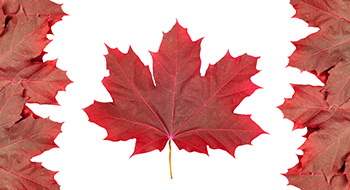

If Canadians want a government shakeup, that’s exactly what an NDP win would deliver.
The party has not only vowed to restore the OAS eligibility age and roll back TFSA contribution room, but has also put forward a range of proposals that would impact businesses, families, retirees, the economy and the environment.
Read: Politics could shrink TFSA contribution room
The question is whether the New Democrats can fulfill all these proposals without weighing on Canada’s growth, says Kathy McMillan, director of wealth management at Richardson GMP in Calgary, Alta.
“Which promises will be kept, and how long will [they] take to implement?” she asks. “If the NDP gets in, the bottom line for the TSX and for clients is [whether] the companies we trade will be able to stay in business and make a profit. But, unless [the NDP] really messes with businesses, markets would settle down with time.”
However, if they do increase general corporate tax from 15% to 17%, “we could see some shifting of companies to more tax-friendly countries. It’s hard to tax businesses to prosperity.”
Overall, larger businesses would likely be most affected by an NDP victory, agrees Keith MacIntyre, national tax leader for Grant Thornton in Halifax, N.S. “A 2% increase in corporate tax would be significant, especially when it applies to whatever income is being made.
“Over the last number of years, the government has made sure Canada’s tax rates are comparable to other regions to reduce the need [for businesses] to shift profits to other jurisdictions,” he adds. “We could put systems in place to prevent [this], but Canada’s tax system is currently competitive.”
On the upside, the NDP also aims to reduce small business tax from 11% to 9%, which the other parties have also pledged. “That’s a good thing, since the federal small business tax rate has been kept at the same level for a long time, even while the provinces have all lowered the rate,” says MacIntyre. “Reducing the small business tax rate wouldn’t [save] a significant amount on an annual basis, but [businesses] would save about $10,000.”
Investors should focus most on this small business initiative, says Wilmot George, vice-president of tax, retirement and estate planning at CI Investments. That’s because “small businesses serve as the backbone of the economy, in that many provide jobs. If we have healthy small businesses, that can lead to a healthy economy.”
Read: NDP promises to reduce prescription drug prices
Would the NDP raise capital gains tax?
Keith MacIntyre, national tax leader for Grant Thornton, highlights a concern for investors. “The one item that’s not included in the NDP’s platform [document], but that was included in their policy book [Editor’s note: that policy book is no longer available on the NDP website], was the hike in taxation of capital gains. Capital gains have never been taxed at 100%, but have been taxed as high as 75% (between 1990 and 2000). But, eleven of the OECD countries do not tax long-term capital gains, and all of the members have different capital gains tax rates than those on normal income. That’s because the underlying income that accrued that profit has already been taxed.”
Going forward, the NDP would also need to deal with the small business deduction on active business income, which is currently $500,000, says MacIntyre. “There has been no reference by any parties to the small business limit. That’s something that must be indexed and increased by the incoming government. Wages, goods and investments […] are increasing in price.”
Innovation and personal tax
MacIntyre is most optimistic about the NDP’s plan to support the manufacturing sector and innovation. He asks, “Can Canada be a manufacturing centre? There’s been a lot in the news about the reduction of funding for innovation, but the NDP would earmark money for R&D. It’s important that we have brands out there where we’re doing the manufacturing, as well as the development and research.”
The party’s non-business tax proposals are fairly innocuous, MacIntyre adds. It has been largely silent on personal tax rates and EI premiums, but would hike CPP benefits. It’s currently ambiguous as to how that hike would affect individuals and employers, he says, but “when you’re dealing with a country as a whole, it could be a prudent long-term measure that ensures the aging population has, in effect, a forced pension plan.”
Read: NDP promises to expand CPP
George notes the NDP’s intention to roll back the OAS eligibility age is also significant. “In the future, it’s proposed that the worker-to-retiree ratio will keep dropping, and that will put a strain on government revenues and public pensions,” which is why the retirement age was pushed higher. “Hopefully the NDP has a plan to fund the additional benefits that will be paid out,” similar to how the party has pledged to put corporate tax profits toward childcare and healthcare.
Further, MacIntyre is wary of the NDP’s intention to scrap the Family Tax Cut, which aims to reduce after-tax income inequality. He’s also concerned about their pledge to roll back TFSA room, given TFSAs are key savings tools that can help people save for first homes or other large expenses.
George agrees, noting that extra TFSA room helps promote conversations about saving and investing. And, “it’s good to have the opportunity to save in a tax-free environment.”
So far, many clients and businesses, especially those in Western provinces, have adopted a wait-and-see approach due to market volatility and political uncertainty, says McMillan. So, “what the NDP should do is [help] eliminate uncertainty and avoid raising taxes when times are tough.”
This story originally appeared on the site of our sister publication Advisor.
